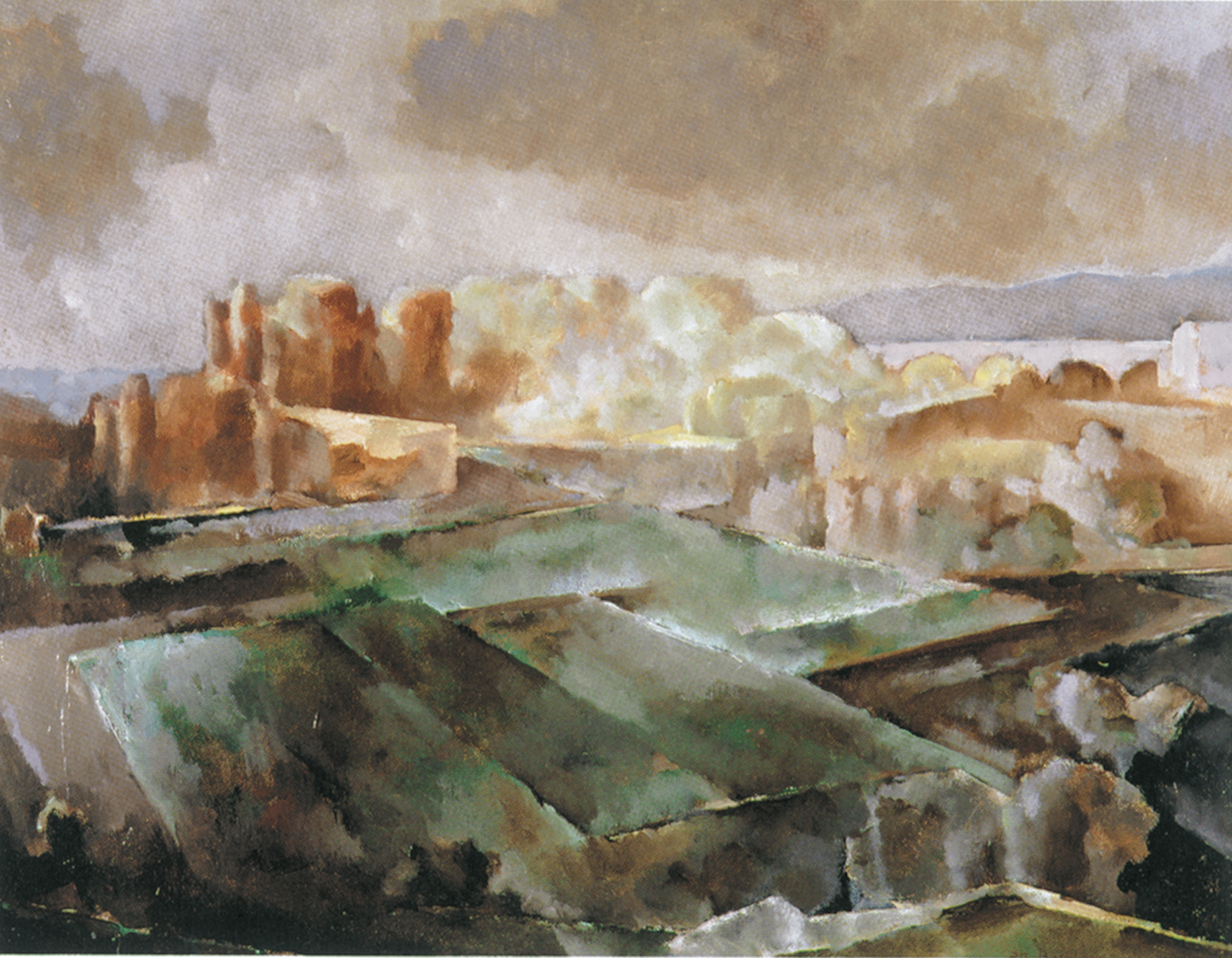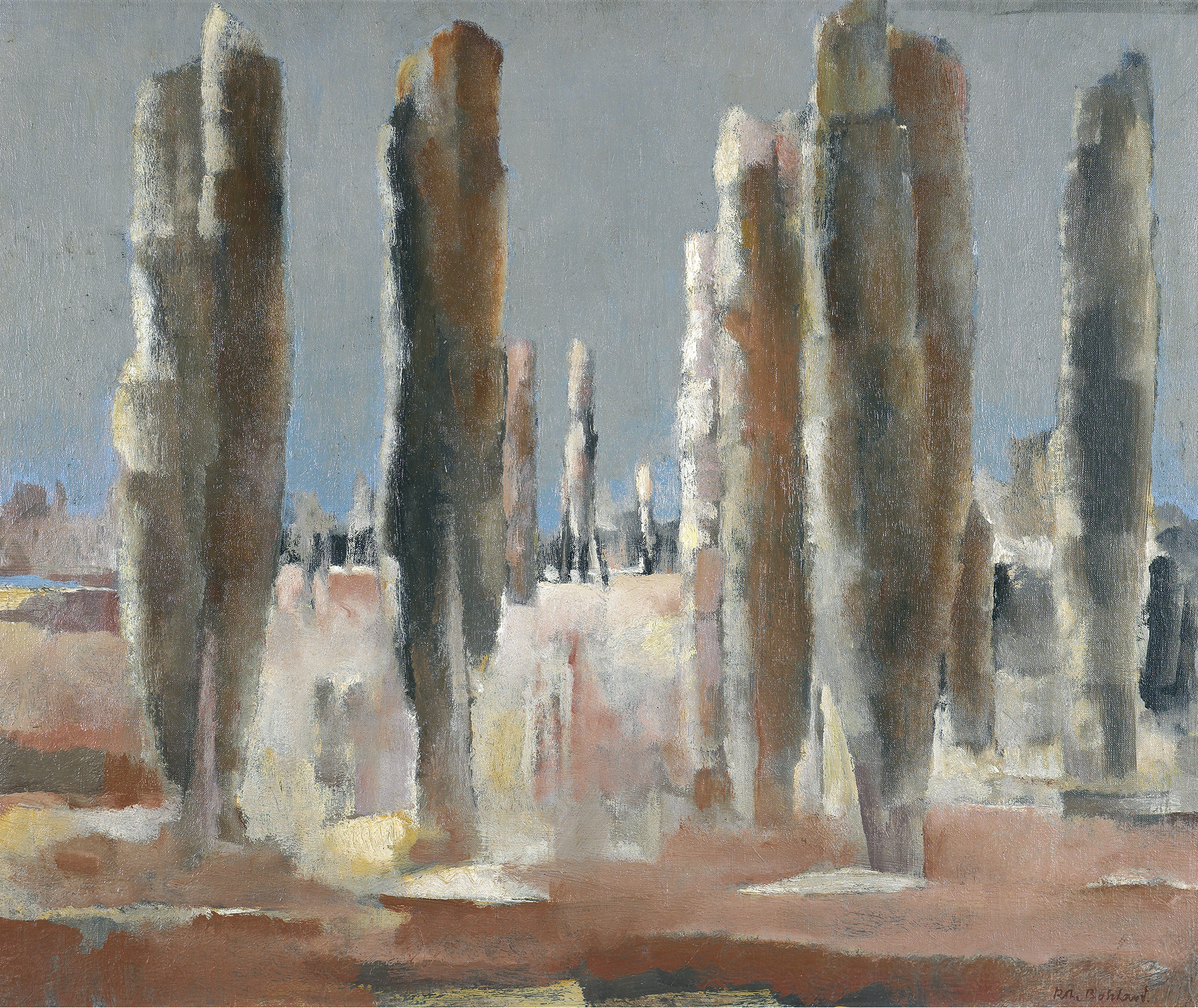Born in 1889 in Morges, Rodolphe-Théophile Bosshard studies at Geneva’s School of Fine Arts. In 1910 he goes to Paris and discovers the Louvre at the side of Gustave Buchet. Whilst the style of his first paintings is expressionist, cubism is soon influencing the way he structures his compositions.
In 1920 he leaves for Paris, where he will live for four years and where he befriends Ossip Zadkine, Marc Chagall, André Derain and Gino Severini, along with the writers and compatriots Charles-Albert Cingria and Blaise Cendrars. Returning to Switzerland, he settles in the village of Riex (Lavaux), in a house provided by the Genevan banker René Hentsch. He makes several trips to countries around the Mediterranean basin—Greece, Algeria, Italy—that allow him to renew his subjects.
Along with easel painting, Bosshard works on large-format pieces and tackles mosaic for two public works he is commissioned to do in the 1930s (Les Muses, 1934, the Advanced School for Young Ladies in Lausanne; and a decoration for the crematorium of Vevy, 1939). Although Bosshard is a painter of stylised landscapes, still lifes and mystical compositions, the female nude dominates his output. He depicts bared bodies, incorporating them in parts of the setting in a fusion of forms that is akin to cubism. Light often functions in an arbitrary way in his paintings, lending an unreal glow to a picture’s motifs that is further heightened by his hazy indistinct brushstroke.
The last twenty years of his life are characterised by work based on a mineral and vegetal world that slips increasingly towards abstraction. His first retrospective is mounted in his lifetime, in 1949, at Vevey’s Musée Jenisch. Since his death in 1960, three additional retrospectives have been put together in the Lake Geneva region, between 1962 and 1986.
In 1920 he leaves for Paris, where he will live for four years and where he befriends Ossip Zadkine, Marc Chagall, André Derain and Gino Severini, along with the writers and compatriots Charles-Albert Cingria and Blaise Cendrars. Returning to Switzerland, he settles in the village of Riex (Lavaux), in a house provided by the Genevan banker René Hentsch. He makes several trips to countries around the Mediterranean basin—Greece, Algeria, Italy—that allow him to renew his subjects.
Along with easel painting, Bosshard works on large-format pieces and tackles mosaic for two public works he is commissioned to do in the 1930s (Les Muses, 1934, the Advanced School for Young Ladies in Lausanne; and a decoration for the crematorium of Vevy, 1939). Although Bosshard is a painter of stylised landscapes, still lifes and mystical compositions, the female nude dominates his output. He depicts bared bodies, incorporating them in parts of the setting in a fusion of forms that is akin to cubism. Light often functions in an arbitrary way in his paintings, lending an unreal glow to a picture’s motifs that is further heightened by his hazy indistinct brushstroke.
The last twenty years of his life are characterised by work based on a mineral and vegetal world that slips increasingly towards abstraction. His first retrospective is mounted in his lifetime, in 1949, at Vevey’s Musée Jenisch. Since his death in 1960, three additional retrospectives have been put together in the Lake Geneva region, between 1962 and 1986.

